BMW X3 Review 2025: Price, specs & boot space
Written by Ivan Aistrop
Quick overview
Pros
- Broad choice of excellent powertrains
- Good space and practicality
- Good to drive on optional adaptive suspension
Cons
- We don’t know if it’s as good on standard suspension
- Some key equipment items are consigned to the options list
- One or two disappointing interior trim pieces
Overall verdict on the BMW X3
"The latest version of the BMW X3 is the fourth iteration of the dynasty, a dynasty that has seen 3.5 million cars sold worldwide since its initial introduction back in 2003. Can the fourth-gen X3 continue that success? We’ll find out in this BMW X3 review."
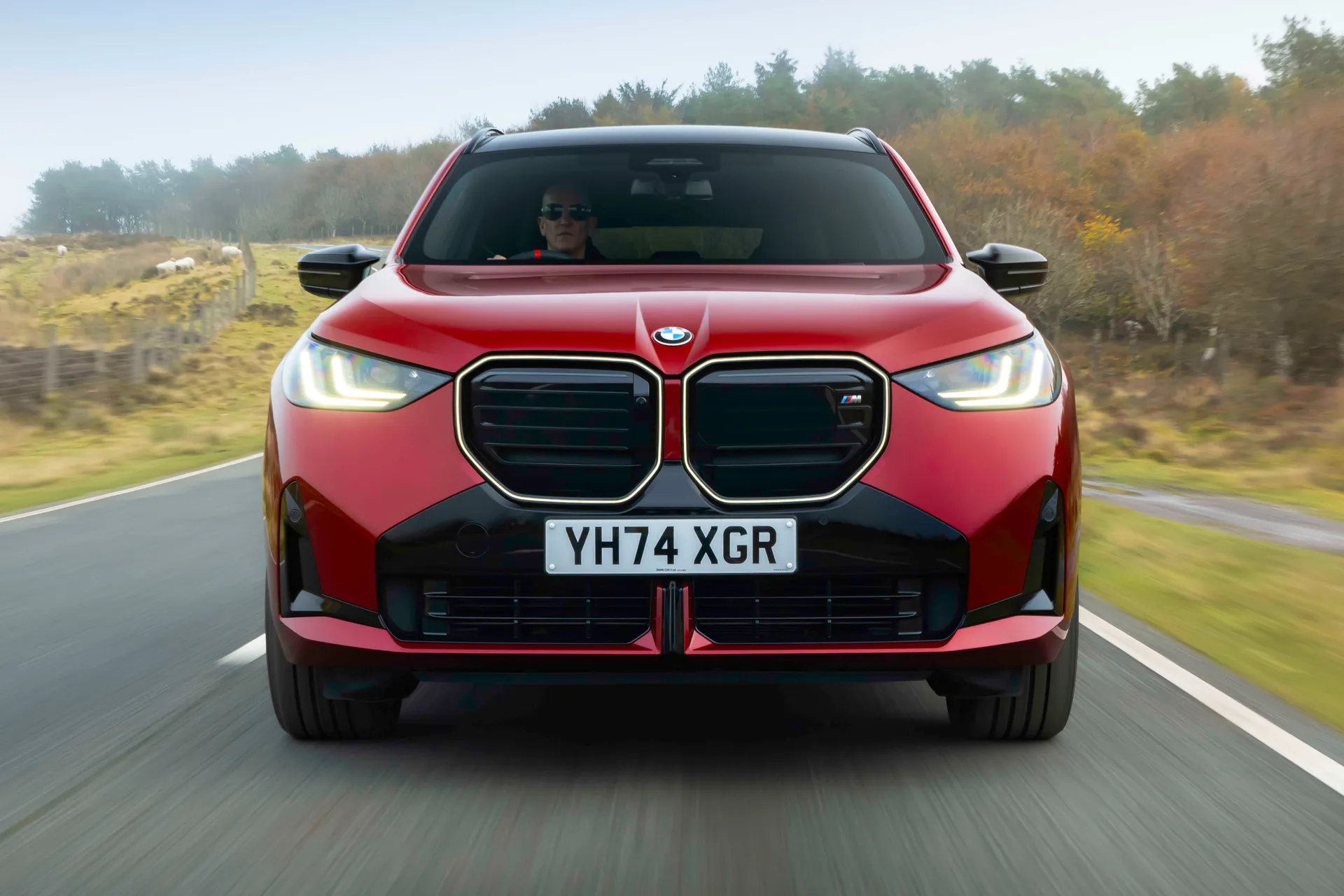
In truth, there might be some argument over whether this really is a fourth-generation model at all. You see, it’s built on the same CLAR platform that its predecessor was, albeit a very heavily revised one. So, some might argue that this is an extensive refresh of the third-gen BMW X3 - codenamed as the G01 in BMW’s internal gobbledygook - rather than an all-new car. However, it certainly looks a lot different, with its massive nostril-like kidney grilles and its angry-looking angular headlights. And besides, BMW has seen fit to give it the new codename of G45, so it must be a new car…
Whatever your view on that, the BMW X3 has been brought bang up to date. It has the firm’s all-singing-all-dancing twin-screen infotainment system running the latest Operating System 9 software, so there’s more connectivity and interactivity than you can shake an iPhone at. Most of the latest driver assistance tech is supported - although much of it costs you extra, annoyingly - and the fashionably minimalist interior design also feels suitably modern.
Importantly in a family SUV, BMW hasn’t forgotten the basics. There’s a really impressive amount of passenger space inside the cabin, while the boot is big and versatile. The build quality feels solid enough to cope with family life, too, although it is still true that one or two interior panels do betray the car’s generally high-class feel.
A broad range of powertrain options are on offer, including petrol, diesel, plug-in hybrid, and a rip-roaring high-performance version. The driving manners we’ve experienced in the car indicated a good blend of comfort and agility, although it must be highlighted that all the cars we’ve driven so far have been fitted with optional suspension, so we still don’t know how the car behaves without this expensive add-on.
All in all, the BMW X3 feels like a very capable all-rounder, and if you spec it right, it’s a car that you’ll enjoy owning. Which is just as well, because it’s likely to cost you a fair few quid…
Looking for a used car for sale? We've got 100s of BMW Approved Used Cars for Sale for you to choose from, including a wide range of BMW X3s for sale. If you're looking for the older version, you need our BMW X3 (2018-2023) review.
Is the BMW X3 right for you?
If it’s been right for you before, then it’ll be right for you again, because the latest BMW X3 is a very logical evolution of the three generations of BMW X3 that have gone before. It takes the car’s traditional strengths of quality, practicality and polished driving dynamics, and brings them up to date with the latest technology. It’s a very pleasant car that you’ll enjoy owning.
Vegans may be interested to know that BMW has banished real leather from the new X3’s cabin too (in standard form at least, Merino leather is still an option) and while there’s no all-electric model – an upcoming ‘Neue Klasse’ SUV will fill that gap – there’s good powertrain choice for UK buyers, with petrol, diesel, plug-in hybrid and performance options.
What’s the best BMW X3 model/engine to choose?
That very much depends on your needs. If you’re looking to keep your initial purchase price as low as possible, then there’s very little wrong with the entry-level BMW X3 20i petrol, which does a reasonable job on both performance and economy. If you’re a company car driver, meanwhile, then the super-low official CO2 output of the 30e PHEV will slash your monthly Benefit-in-Kind company car tax bill. Just make sure you can charge it up regularly otherwise it’ll cost you a lot in petrol.
If you’re a long-distance driver covering countless motorway miles, then no version will give you more miles for your moolah than the BMW X3 20d diesel, however unfashionable it may be. But if you simply want the fastest, brashest and baddest version of the X3, then it has to be the high-powered M50 version.
What other cars are similar to the BMW X3?
The BMW X3 dusts it with all other premium-badged mid-size SUV rivals, and these are not few in number. Its biggest adversaries will be from its homeland, in the form of the Audi Q5 and the Mercedes GLC: this German triumvirate has been squabbling over class supremacy for several years.
That’s not it, however. The sporty Jaguar F-Pace makes an interesting alternative, as does the rugged Land Rover Discovery Sport and the stylish Volvo XC60. More leftfield contenders come in the form of the ultra-reliable Lexus NX and the flamboyant Alfa Romeo Stelvio.
Comfort and design: BMW X3 interior
"Minimalism is very much the fashion when it comes to automotive interior design these days, and the latest BMW X3 is no exception. You’ll find very little in the way of physical switchgear."
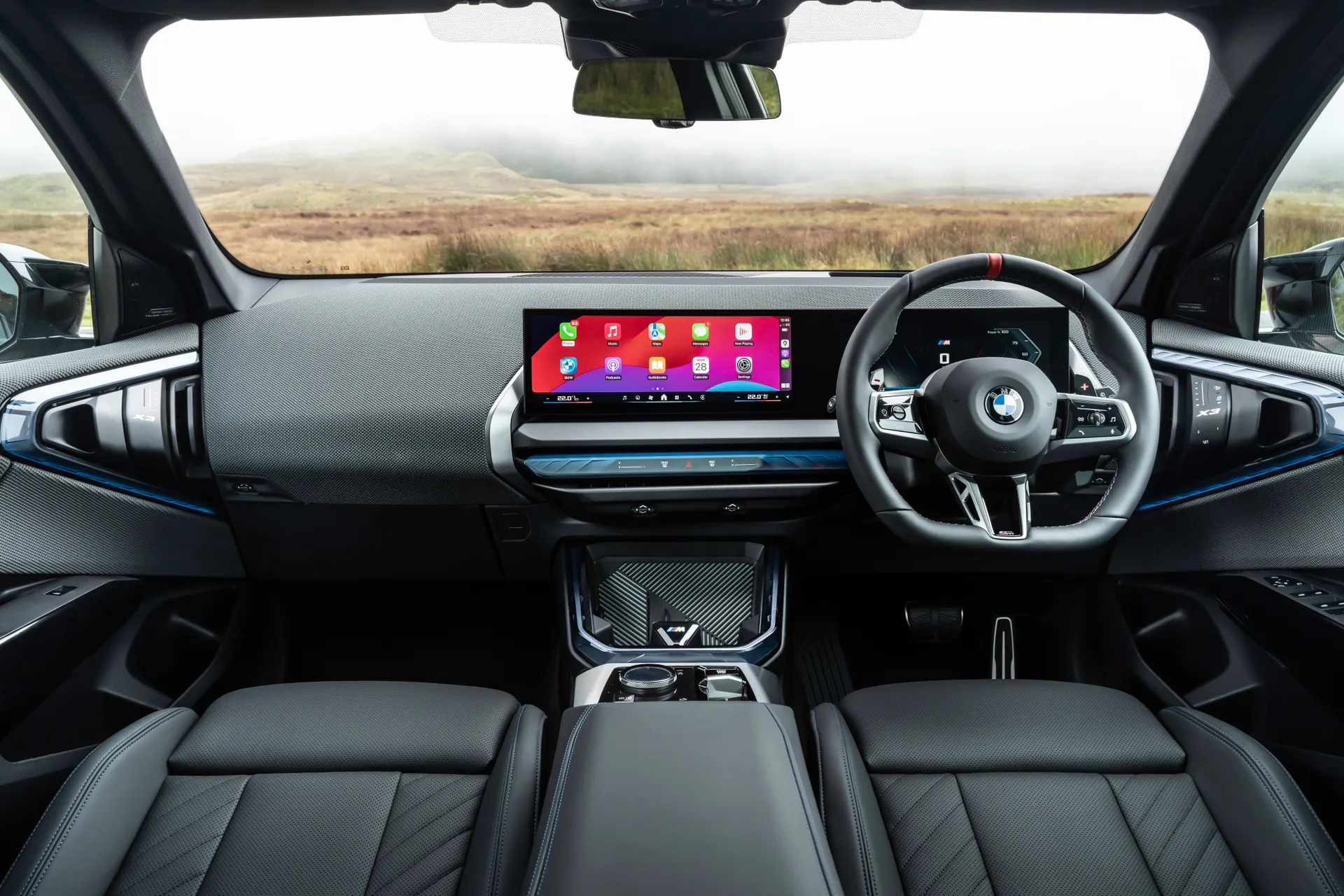
This means that most of the car’s functions have to be operated through the car’s glossy central touchscreen, but we’ll talk about how all this works in a minute. You will notice, however, that the latest X3 has the same ‘Interaction Bar’ feature that you get in other larger BMW models such as the 5 Series and 7 Series. This is a horizontal illuminated strip that runs across the dashboard and into the doors, and it houses a small number of discreet touch-sensitive controls for various things (like the angle of your air vents), as well as providing function-specific ambient lighting in the cabin: for example, when you activate the hazard lights, the whole thing glows orange.
The other thing you’ll notice sitting in the front of the BMW X3 is how much storage space there is: loads, is the answer. You get massive door bins, a large cubby under the central armrest, and another innovatively designed space in front of that, which combines your cupholders, a wireless phone charger, and more storage space all into one entity.
Quality and design
Any BMW needs to deliver a feeling of quality when you climb inside, and that’s particularly important when it’s a fairly large car like the X3 is. The latest BMW X3 broadly does, but not as convincingly as previous versions of the car.
Many of the materials on display have an appropriately glossy finish, and most of the various trim pieces look and feel high in quality. The vegan leather upholstery feels as good - if not better - than the real stuff, while the woven textile covering on the dashboard looks stylish and interesting.
However, you don’t have to look around too hard before you find a handful of panels that feel surprisingly low-rent and out-of-place in a BMW. The door pulls are the biggest offenders: they’re constructed out of hard, scratchy plastics, and there are several untidy seams to be found between the component parts of the unit. The door bins are a bit scratchy, too, while the plastic panel immediately below the infotainment screen should be a bit posher in its look and feel.
Infotainment: touchscreen, USB, nav and stereo in the BMW X3
Like in most of BMW’s other recent models, the X3 has a pair of high definition digital screens on the dashboard, and these are both integrated into one unit that curves elegantly around the driver. The 12.3-inch one behind the steering wheel displays your essential driving information in the same way traditional instruments would, while the 14.9-inch infotainment screen to the left of that in the centre of the dashboard deals with most of the car’s myriad functionality.
In terms of the infotainment portion of that functionality, all the usual stuff is supported, including DAB radio, Bluetooth, navigation, wireless phone charging, four USB-C ports, Apple CarPlay and Android Auto. However, with very little switchgear on show inside the car, there are dozens of other functions that you control through the screen.
The first thing to say is that the system looks great. The screens themselves look glossy and posh, while the graphics displayed upon them are sharp and colourful, and the animations and screen transitions are fast and slick. It all helps give the BMW X3 a properly high-tech feel.
As is the expectation these days, touchscreen functionality is provided. Importantly, however, so is the rotary controller that has made BMW’s iDrive infotainment setup one of the best in the business over recent years. What’s more, smattered around that rotary controller sit a handful of very useful shortcut buttons.
This arrangement makes it much easier and less distracting to select on-screen icons and scroll through menus as you drive along: jabbing and swiping at a touchscreen with your finger simply requires too much concentration, concentration that’s diverted from the road ahead.
Granted, the sheer amount of features that the system controls means it can be slightly difficult to find a particular function at times, but this system is still easier to navigate than most thanks to logically arranged menus.
We’d prefer physical air-con controls, though. The temperature controls are always in view on the screen, but adjusting anything else where the ventilation system is concerned involves delving into an on-screen55 submenu.
Space and practicality: BMW X3 boot space
The BMW X3 does a really solid job in this area, with lots of room all round. Rear legroom is especially impressive, and despite all our test cars being fitted with an optional panoramic sunroof, headroom was also more than generous enough to comfortably accommodate tall adults.
You even stand a fighting chance of getting three of them back there, too. The rear of the cabin has enough width to sit three people side by side in reasonable comfort, and the middle seat of the three isn’t as narrow as they often are, and it’s not as hard or as raised, either. Whoever finds themselves perched there will sit with their feet either side of a bulky transmission tunnel in the floor, but there’s plenty of foot space either side.
The boot has 570 litres (reduced to 460 litres in the BMW X3 30e plug-in hybrid due to the battery) of space on offer, and that space is a usefully square shape. There is a bit of a lip at the entrance, but it’s small enough that it doesn’t get in the way too much when loading heavy items. You also get a small amount of underfloor space.
You can fold down the rear seats, but there are no catches in the boot that allow you to do this from the back of the car, so you have to walk around to the rear doors and use the ones on top of the rear-seat backrests. They drop in a 40/20/40 arrangement, which is more versatile than the 60/40 split you find in some competitors. The folded backrests sit level with the floor of the boot, but because they lie at an angle, your extended load area is gently sloped.
Handling and ride quality: What is the BMW X3 like to drive?
"As ever with BMW, it’s not simply a case of choosing a model and leaving it at that. The BMW X3 range has a variety of suspension setups on offer that could fundamentally change how your car behaves on the road, and some of them will cost you extra."
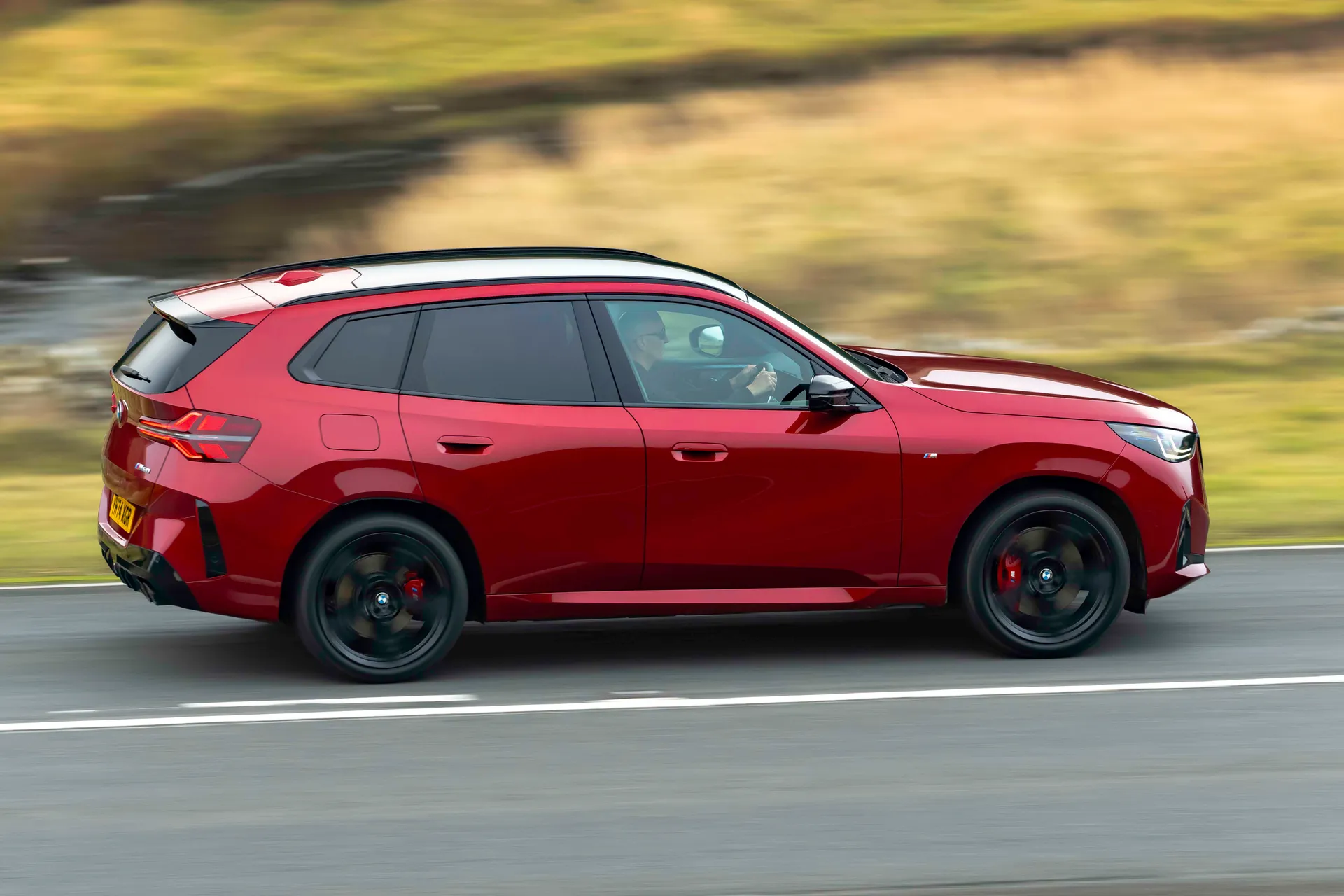
Both BMW X3 xLine and M Sport variants get passive suspension as standard, the former in a comfort-focussed configuration and the latter with slightly racier settings. Unfortunately we haven’t had the chance to try either configuration yet, so we can’t yet tell you how they fare for either ride comfort or handling ability. We’ll update this review as soon as that changes.
Instead, all the cars we’ve driven have been fitted with optional adaptive suspension, which allows you to alter the firmness of your suspension by switching between driving modes. This costs extra on both the main trim levels, although it’ll cost you around half the amount if you go for an M Sport over an xLine.
We can’t tell you whether it’s worth the money you pay until we’ve driven a car without it, but we can tell you that with it fitted, the BMW X3 is pretty impressive on the road. In the sportier of the modes, the firmness of the suspension gives you a feeling of connection with the road, along with tight body control with which to tackle corners more effectively. That’s in addition to the car’s strong grip and sharp steering responses, and the combination of all those factors make the BMW X3 feel impressively nimble for a car this tall.
While some drivers will like this firmness, we reckon that plenty of others will find it too much. However, the good news is that selecting the suspension’s cushier setting softens things off by quite a lot: there’s still a slightly firm edge to the ride compared with some prestige SUVs, but it’s still forgiving enough to smooth over most lumps and bumps comfortably.
Go for the standalone M50 model, and your car comes as standard with the same passive setup as the regular M Sport. Alternatively, you can pay another few hundred quid to add something called M Adaptive Suspension. This uses pretty much the same hardware as the optional adaptive suspension on regular models, but with racier settings and recalibrated steering. To be honest, we didn’t notice a great deal of difference between the two systems.
What engines and gearboxes are available in the BMW X3?
BMW offers the new X3 with four different powertrain options, all with BMW’s xDrive four-wheel-drive system and an eight-speed automatic gearbox. The range kicks off with the 20 petrol (BMW fans might want to instinctively call this the 20i, but the ‘i’ part of the company’s old nomenclature is now being phased out), which has a 2.0-litre, four-cylinder petrol engine, complete with 48-volt mild hybrid tech, and that combination delivers a total of 208PS. Official figures suggest it’ll do 0-62mph in 7.8 seconds, and a top speed of 134mph.
At a similar level of performance and cost is the 20d, the only diesel option in the line-up. This also has mild hybrid assistance to supplement its 2.0-litre turbodiesel engine, and that combination gives a total of 197PS, making it capable of a 0-62mph sprint time of 7.7 seconds. Its top speed is identical to the 20 petrol’s.
Next up on the spectrum is the 30e plug-in hybrid. This uses the 20’s petrol engine, combined with a much larger battery and a much brawnier electric motor, to deliver a total power output of 299PS. Despite the considerable extra grunt, its top speed is the same as that of the engines we’ve already mentioned, but its 0-62mph time is cut to 6.2 seconds. The bigger difference, though, is that it can roll along for up to 56 miles on electric power alone, according to official WLTP figures.
If you’re looking for a bit more sizzle from your SUV, the BMW X3 M50 version sits at the top of the range. This X3 is packing a 3.0-litre straight-six petrol engine, augmented by 48-volt mild hybrid tech, and BMW gives its power output at a whopping 398PS. For all you stat-fans out there, the 0-62mph time for this family SUV stands at 4.6 seconds, while the top speed is electronically limited to 155mph.
So far, we’ve only had the chance to drive the bookends of the range, the entry-level 20 petrol, and the range-topping M50.
For most drivers, we think that the entry-level 20 will be entirely adequate. Okay, it’s hardly quick, but it never feels out of its depth and it responds fairly keenly when you ask for acceleration. It works well with the automatic gearbox, keeping things relaxed and smooth in pretty much any situation. Granted, you sometimes sense that the engine is having to work pretty hard to pull the weight of the X3’s body around, because you can hear the faint sound of the engine revving away in the background. The noise really is only very faint though, and rarely gets loud enough to cause any issue.
The BMW X3 M50, meanwhile, feels as brutal as you might expect given its astronomical numbers. A floored throttle pedal will have you searing towards the horizon with properly brutal force, and the noise the engine makes in the process is utterly intoxicating. And that immense power feels accessible from just about anywhere on the rev range, so not only do you get scintillating pace, you also get effortless flexibility. The Jekyll-and-Hyde nature of the gearbox is appealing, too: when you’re on it, the fast, punchy shifts have the engine behaving like some sort of rabid monster, and when you’re not, it keeps everything docile and easy.
Refinement and noise levels
Like we’ve said about the engines we’ve tried, the 20 petrol can sometime be heard working pretty hard to maintain even moderate speed, but engine noise is so well isolated from the cabin that it very rarely causes a problem. The M50, meanwhile, sounds wonderfully raucous when you want it to, and stays smooth and quite when you don’t.
Wind noise is at about the level you’d expect in a premium SUV, so isn’t a problem, and the level of road noise depends on the size of the wheels and tyres fitted to your car. The wider rubber of the M50 results in a smidge more noise that more humble versions, but tyre noise isn’t problematic in any BMW X3.
Safety equipment: How safe is the BMW X3
You expect any new car these days to come with a fair amount of semi-autonomous driver aids, and that goes double for a premium product like the BMW X3. However, we can’t help feeling that BMW could’ve done a bit better on that score.
The standard roster of safety kit includes front collision warning, automatic emergency braking, lane departure warning, lane change warning and speed limit assist. However, if you want a key feature like adaptive cruise control, which many will, you have to add an expensive option pack, and that’s disappointing considering that this feature comes as standard on many cars that cost a fraction of what the X3 costs. The pack also includes a steering and lane control assistant, automatic speed limit assist.
This latest fourth-generation version of the BMW X3 hasn’t yet been crash-tested by Euro NCAP. The previous third-generation version of the car achieved the full five stars when it was tested back in 2017, and as it’s based on the same platform as the new car, you’d hope for a similarly impressive performance. However, that’s by no means a given, not least because every year, the tests get tougher and tougher.
MPG and fuel costs: What does a BMW X3 cost to run?
"On paper, the star of the show for fuel economy is the 30e plug-in hybrid version of the BMW X3, with its official WLTP average of up to 313.9mpg. That’s thanks to its ability to run for up to 56 miles on electric-only power."
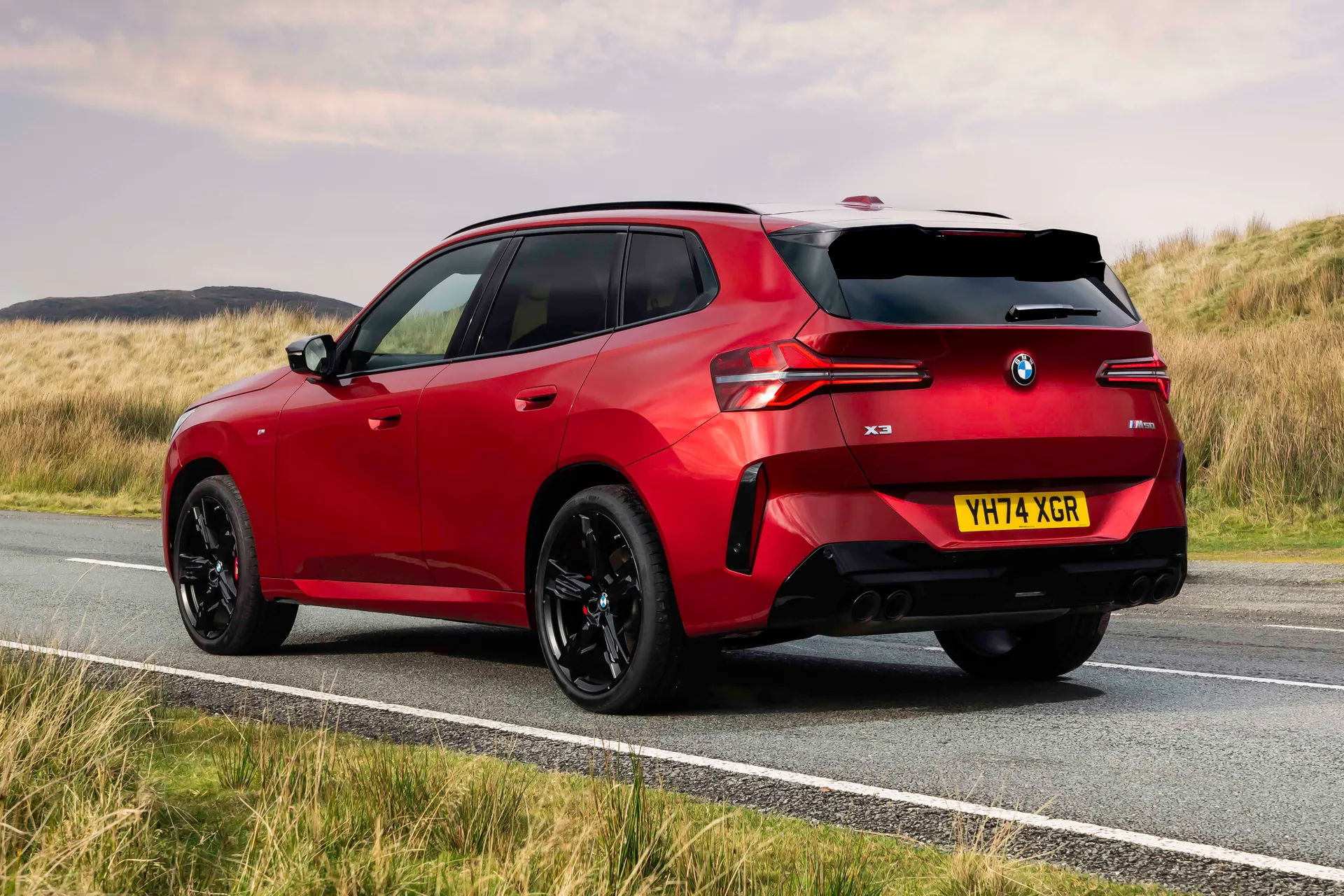
However, do bear in mind that official WLTP tests are always unrealistically flattering to plug-in hybrids because of how they’re conducted, so this figure should be treated with a great deal of suspicion. Certainly don’t expect to get anywhere near that in the real world with mixed use.
In short, what you actually end up getting in reality will depend entirely on how you use your car. Keep the battery charged up with electricity and limit yourself to only shorter journeys that can be completed using just the electric motor, and you won’t use a single drop of petrol. The thing is, though, if that’s how you use your car, then you might as well have a fully electric car.
Moreover, be aware that as soon as your battery runs dry and the petrol engine fires up,the car will get very thirsty very quickly, because the petrol engine is having to haul around a heavy body, laden further with heavy batteries. Indeed, the returns you get in that instance probably won’t be that much better than you get in the range-topping M50 performance version, which is the thirstiest BMW X3 of the bunch on paper.
And the return you get on that M50 version? Up to 36.7mpg according to official WLTP figures. But again, treat that figure with scepticism. Make use of that prodigious power like the car’s makers intended, and you’ll be very lucky to hit the low twenties.
The entry-level 20 petrol, meanwhile, has an official WLTP return of up to 40.9mpg, while the 20d diesel’s figure is up to 48.7mpg.
BMW X3 reliability and warranty
Obviously, the latest BMW X3 is too new for any potential reliability issues to have made themselves known yet, so all we can do is look towards the previous iteration for clues.
Look at our go-to source for reliability data, the HonestJohn.co.uk Satisfaction Index put together by our sister website, and you won’t find many mentions of the previous BMW X3. It doesn’t feature in the list of the ten most reliable cars in the study, but neither does it feature in the list of the 10 least reliable cars. It’s the same story with the list of the most and least satisfying cars to own.
As a brand, BMW doesn’t feature on the list of the ten most reliable manufacturers, but neither does it feature on the list of the ten least reliable manufacturers, but interestingly, most rival prestige manufacturers do feature on the latter list, including Audi, Mercedes-Benz, Jaguar, Land Rover and Porsche. All of this basically suggests mid-table respectability/obscurity for both BMW and the X3, which we’re sure the German manufacturer will take when the competition has performed worse.
That mid-table respectability is further cemented by the manufacturer standings for overall customer satisfaction, which put BMW in 12th place among the 29 carmakers considered.
BMW’s warranty is capped at three years, which is disappointing compared to what many other firms give you, but at least there’s no mileage limit.
BMW X3 insurance groups and costs
Insurance groups for the BMW X3 start at 32 for the 20 petrol, while the 20d sits one group higher in group 33. The 30e PHEV falls into group 38, meanwhile, and all of these groupings are the same regardless of whether you choose xLine or M Sport trim.
Predictably, the M50 has the highest classification of group 42, but given its power and performance, we’re frankly staggered it’s not classed higher.At the time of writing, BMW hasn’t yet confirmed insurance groups for the X3. The outgoing model started at group 28 and maxed out at group 50, and we’d expect a similar spread for the latest car.
VED car tax: What is the annual road tax on a BMW X3?
All versions of the X3 cost more than £40,000 when brand new, so all are subject to the exchequer’s expensive car surcharge for VED road tax. This means that on top of the £190 you pay annually for your now-metaphorical tax disc (mild hybrid versions get a discount of a tenner - woo hoo!), you’re also required to pay an extra £410 on top for a five-year period between years two and six of the car’s life. This liability is transferred to subsequent owners, so you can’t swerve it by buying a used example.
BMW X3 price
"BMWs don’t come cheap, especially ones that are fairly generous in size, so it’ll come as no surprise that the latest X3 isn’t exactly the most affordable car of its type."
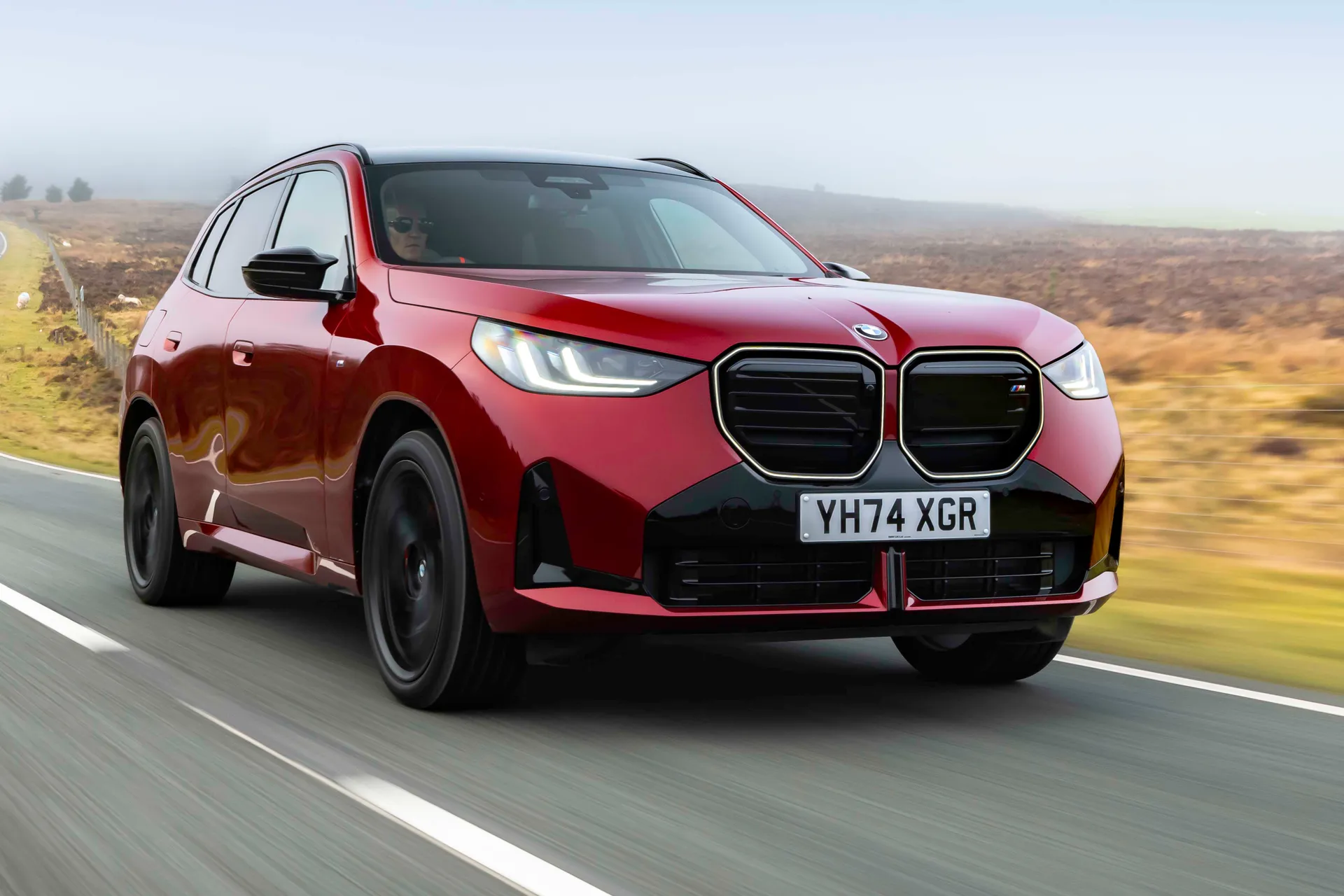
Prices for brand new versions start at around £50,000: that’s for entry-level xLine versions of the 20 petrol and 20d diesel. The 30e PHEV version, meanwhile, will set you back closer to £60,000, and expect to pay more like £70,000 for the range-topping M50 performance model. And if you’re buying new, be careful with the optional extras. BMW offers absolutely loads of them, with many of the most desirable items bundled up into expensive packs, and getting carried away will escalate the price of your car very quickly indeed.
This generation of X3 is too new for there to be many examples available on the used car market just yet, and because the car is likely to hold onto its value reasonably well, it might be a while before significant discounts can be found. Your best bet is to sniff out an ex-demonstrator model, or a car that has been pre-registered by a dealer to meet sales targets. These often give you an as-new car with only a handful of delivery miles for a very useful discount.
Trim levels and standard equipment
The X3 is available in two main trim levels, while the M50 is a standalone model that comes in its own form. The entry-level trim is the xLine. We won’t go back over all the safety and infotainment stuff we’ve already talked about, but on top of that,, you also get alloy wheels, LED lights all round, power folding door mirrors, a powered tailgate, three-zone climate control air-conditioning, cruise control, electrically adjustable front sports seats with heating, recycled cloth upholstery, a leather sports steering wheel, parking sensors and a reversing camera.
M Sport trim adds all sorts of sporty styling touches inside and out, plus vegan leather upholstery and M Sport suspension. The M50 version, meanwhile, adds an illuminated grille, quad exhausts, and M Sport brakes.
Ask the heycar experts: common questions
Is the BMW X3 a 4x4?
Is the BMW X3 a good car?
How much does the BMW X3 cost?
Get our latest advice, news and offers
Keep me updated by email with the latest advice, news and offers from heycar.
By submitting you agree to our privacy policy





